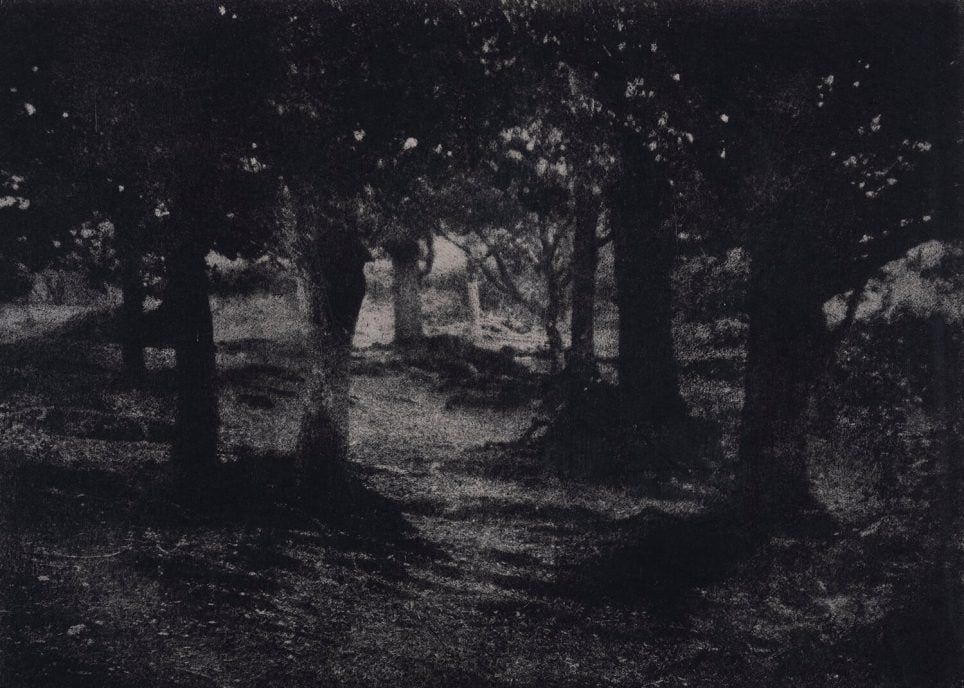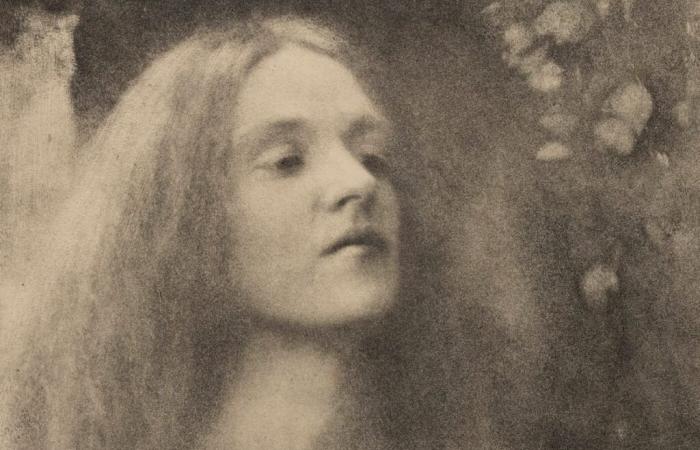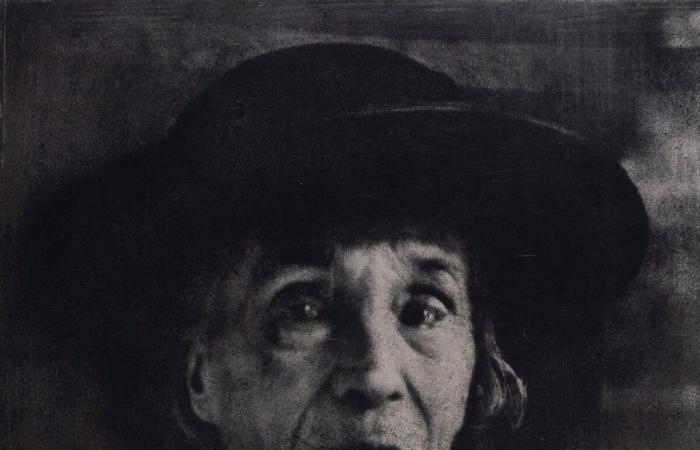His work has been sleeping far from museums for a century. An abundant, unsuspected and above all founding work: because Frenchwoman Céline Laguarde (1873–1961) was indeed among the main representatives of the first movement in the history of photography, pictorialism. Like the British Julia Margaret Cameron, honored with a major retrospective at the Jeu de Paume in 2023, or the American Gertrude Käsebier, she is one of those who have established themselves as true pioneers of photographybut which history has relegated to the background… Even though it was exhibited numerous times during its lifetime, in France but also in the United States!
In the case of Céline Laguarde, it was the exhibition “Who is afraid of women photographers, 1839–1945”, at the Orangerie museum in 2015, which gave the opportunity to discover the artist's collectionuntil now remained unpublished. The Musée d'Orsay has since acquired more than 200 tests of the artist – 130 are brought together in this very first retrospective, which reveals a plural and fascinating work, mixing portraits, landscapes and even scientific photographs.
A major figure of pictorialism
Before going any further, introductions are necessary. Céline Laguarde was born in 1873 into a wealthy family in the Basque Country. Her father died when she was only three years old, and after a brief stay in Paris, she moved with her mother to Aix-en-Provence where she became known in particular for her talents as a pianist. But aside from her ranges, the young woman started photography around the age of 25. The first photos that she sent to magazines were in the spirit of a female amateur practice in the 19th centurye centurywhich mainly documents family life. But Céline Laguarde's ambitions are quite different.
Celine Laguarde, Stella1904
i
Pigment print • 21.7 × 14.9 cm • Coll. Paris, Musée d'Orsay • © Musée d'Orsay, Dist. RMN-Grand Palais / Patrice Schmidt
In 1901, the young woman joins the prestigious Photo-club of Pariswhich counts in its ranks the greatest representatives of pictorialism in France: Robert Demachy, Constant Puyo… This movement, born in the 1880s in England, defends the artistic scope of the photographic mediumwhich cannot simply reproduce reality, as proof. Its followers thus claim the aesthetic of blur, play with lights, seek subtle chiaroscuro effects…
Céline Laguarde gets acquainted with Demachy at the gum bichromate techniqueconsisting of applying a mixture of gum arabic, potassium dichromate and pigments to a sheet of paper which, once dry, becomes photosensitive. This meticulous process allows the artist, who then works like a painter with brushes, to “interpret” the imagethat is to say to intervene directly on it by attenuating for example certain details, by increasing the contrasts… This is what gives his images a kind of vaporous effectas if Laguarde's visions, populated by young women or little girls with a pensive look, came straight out of a dream.
In the tradition of Julia Margaret Cameron
Celine Laguarde, Portrait of the entomologist Fabre1913
i
Oily ink print • 26.6 × 20.5 cm • Coll. Paris, Musée d'Orsay • © Musée d'Orsay, Dist. RMN-Grand Palais / Patrice Schmidt
Faced with these evanescent portraitsshrouded in twilight light, we of course think of her elder Julia Margaret Cameron. Like her, Céline Larguarde is inspired by female figures in literature and draws on medieval and renaissance iconography. His models look like Madonnas, both pious and sensual. Like Cameron again, from 1910 she devoted herself to a series of male portraits – recognized figures from the scientific, literary and artistic world – and responds to orders.
However, the photographer does not limit herself to portraits. From her native Basque Country to Provence via Spain or Normandy, she also captures the picturesque beauty of the landscapes : fields of almond trees in bloom, the Alcázar of Toledo dominating the rock… The one which has now turned to a process with oily inks amplifies the atmospheric effects, densifies the contrasts. His work is then tinged with a rare dramatic power.


Celine Laguarde, Undergrowth landscape, Basque Country1911
i
Oily ink print • 17.3 × 23.6 cm • Coll. Paris, Musée d'Orsay • © Musée d'Orsay, Dist. RMN-Grand Palais / Patrice Schmidt
In 1913, as pictorialism gradually evaporated, Céline Laguarde married the eminent Swiss entomologist Édouard Bugnion. Far from abandoning her career as a photographer, she explored a new field: scientific microphotography. Published in scientific journals and presented at conferences in learned societies, his work still receives unanimous recognition. We must add to all this another talent: that of musicianCéline Laguarde having never abandoned her piano despite her work as a photographer – another facet of this plural artist, which it was definitely time to bring out of the limbo of oblivion.
Céline Laguarde (1873-1961). Photographer
From September 24, 2024 to January 12, 2025
Musée d'Orsay • Esplanade Valéry Giscard d'Estaing • 75007 Paris
www.musee-orsay.fr








